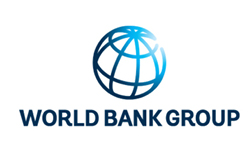Publications
Filter by
605 results found
This brief outlines whyaddressing inefficiencies must be a priority across the entire system of interconnected roads, railroads, ports, and airports, in any given area.

This paper is a collaboration between the World Bank’s Transport Global Practice, the World Bank’s Energy Sector Management Assistance Program (ESMAP) and the International Association of Public Transport (UITP) to assemble evidence, viewpoints, and analysis on eMobility programs.

The objective of the report and the accompanying index is not simply to rank countries, but to use score movements as a benchmark from which to investigate trends, identify successful PPP performers, and focus on the approaches that can facilitate a better understanding of common challenges and best-practice standards.

The main objectives of this report are to share information within the World Bank and with its partners and client countries about the World Bank's activities to support open data efforts.

This report leverages the experience of NGFS members and observers, as well as a survey of 25 central banks and 24 financial supervisors, to examine key challenges related to market transparency in green finance - particularly with regard to taxonomies; green external review and assessment; and climate transition metrics, frameworks, and market products. It also aims to inform a broad dialogue with market participants to find potential solutions to policy challenges.

This publication illustartes the EIB's framework for assessing, managing and monitoring environmental and social impacts and risks associated with its operations.

The European Commission's Economic Appraisal Vademecum 2021-2027 - General Principles and Sector Applications aims to promote and simplify the use of Economic Appraisal (EA) for EU co-financed investments.

The European Commission's 'Guide to Cost-Benefit Analysis of Investment Projects' is a practical guide to major project appraisals.

The European PPP Expertise Centre's mission is to support the public sector across Europe in delivering better public-private partnerships (PPPs). It shares good practice, assists policy development, and supports PPP project preparation.

This paper presents three different approaches to quantifying postive and negative “additionalities” of cross-border transport infrastructure developments in GMS economic corridors.

The Financial Stability Board (FSB) have published a consultation report on the Evaluation of the effects of financial regulatory reforms on infrastructure finance.
The study evaluates the market, business and financial aspects for the development of telecom broadband access for the EIB's Mediterranean Partner Countries.


ndustry 4.0 can be characterized by the integration of autonomous robots and machinery and other smart technologies. It is a move toward smart technology in manufacturing with a focus on connectivity.


The aim of this report is to increase knowledge about cross-border transport infrastructure planning in the Nordic countries by identifying barriers, highlighting opportunities, and proposing measures to facilitate the planning of cross-border transport infrastructure.

This analysis was drawn from the GI Hub's InfraCompass tool. and the case study reflects information on how the reform of land registration in the Malaysian state of Sarawak took place.



This paper provides reflections and considerations as to how MDBs including the IDB can use the Project Preparation Facilities (PPFs) to help countries fill the infrastructure gap by improving the quality of projects, reducing and mitigating risks, and leveraging private financing.


The World Economic Forum publishes a Financial Development Index annually, which measures and analyses the factors enabling the development of financial systems among different economies.



This publication discusses financial viability support in the global landscape of infrastructure finance.


This publication captures the proceedings of the forum, which featured presentations on the regional economic outlook and various financing schemes for urban infrastructure projects.




 Link
Link

